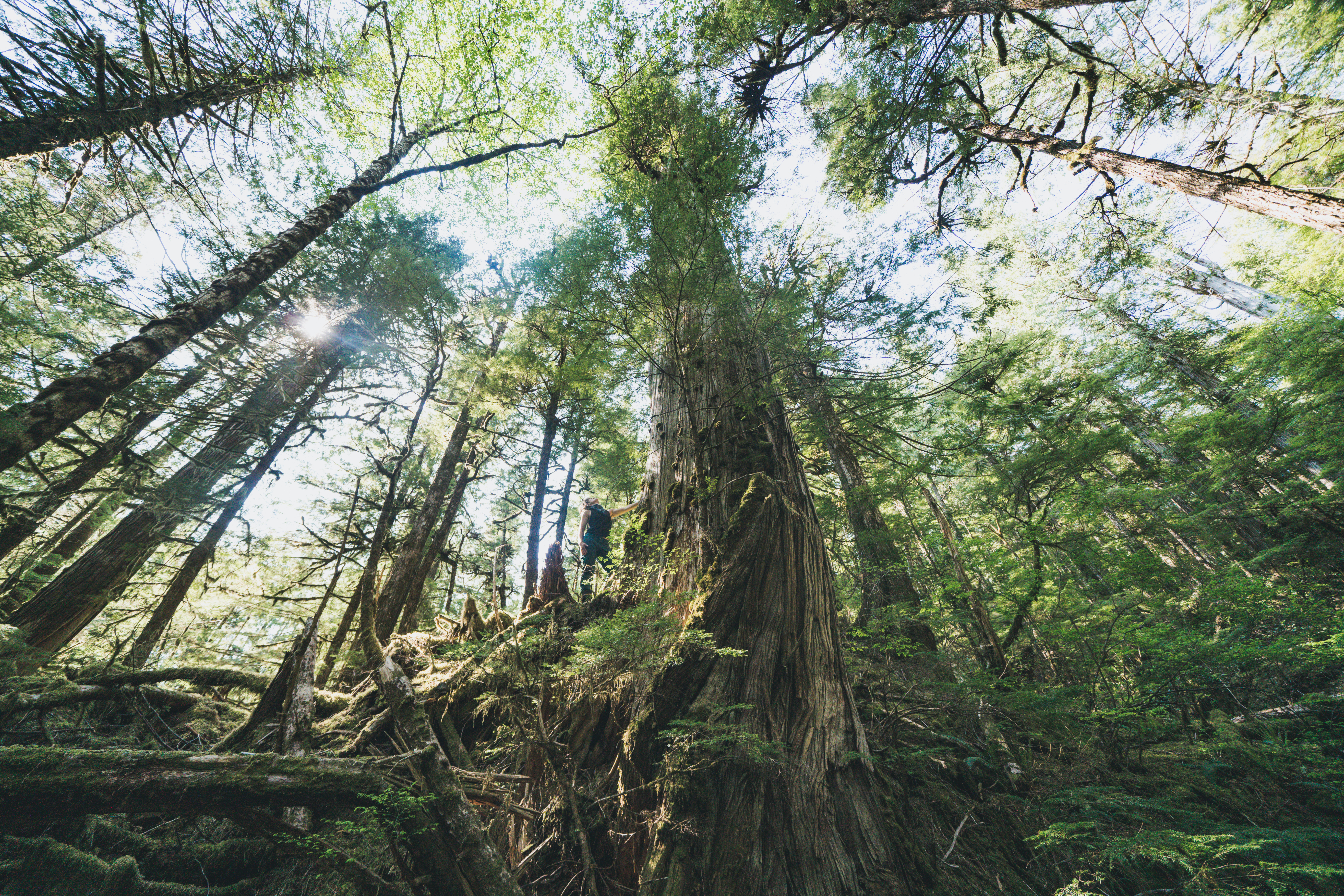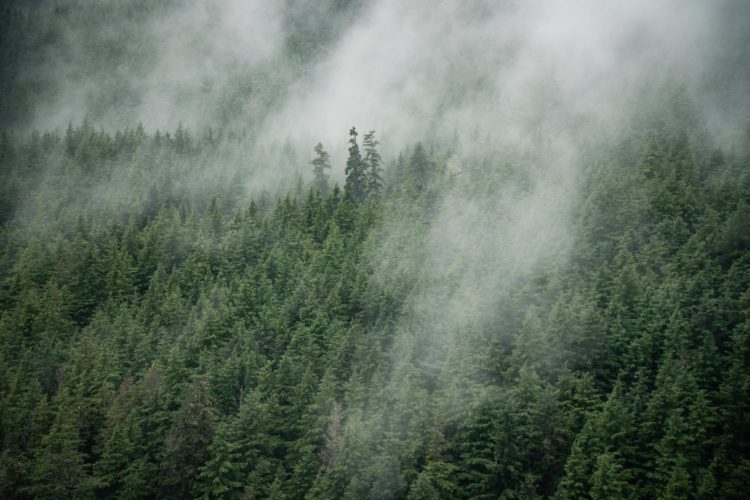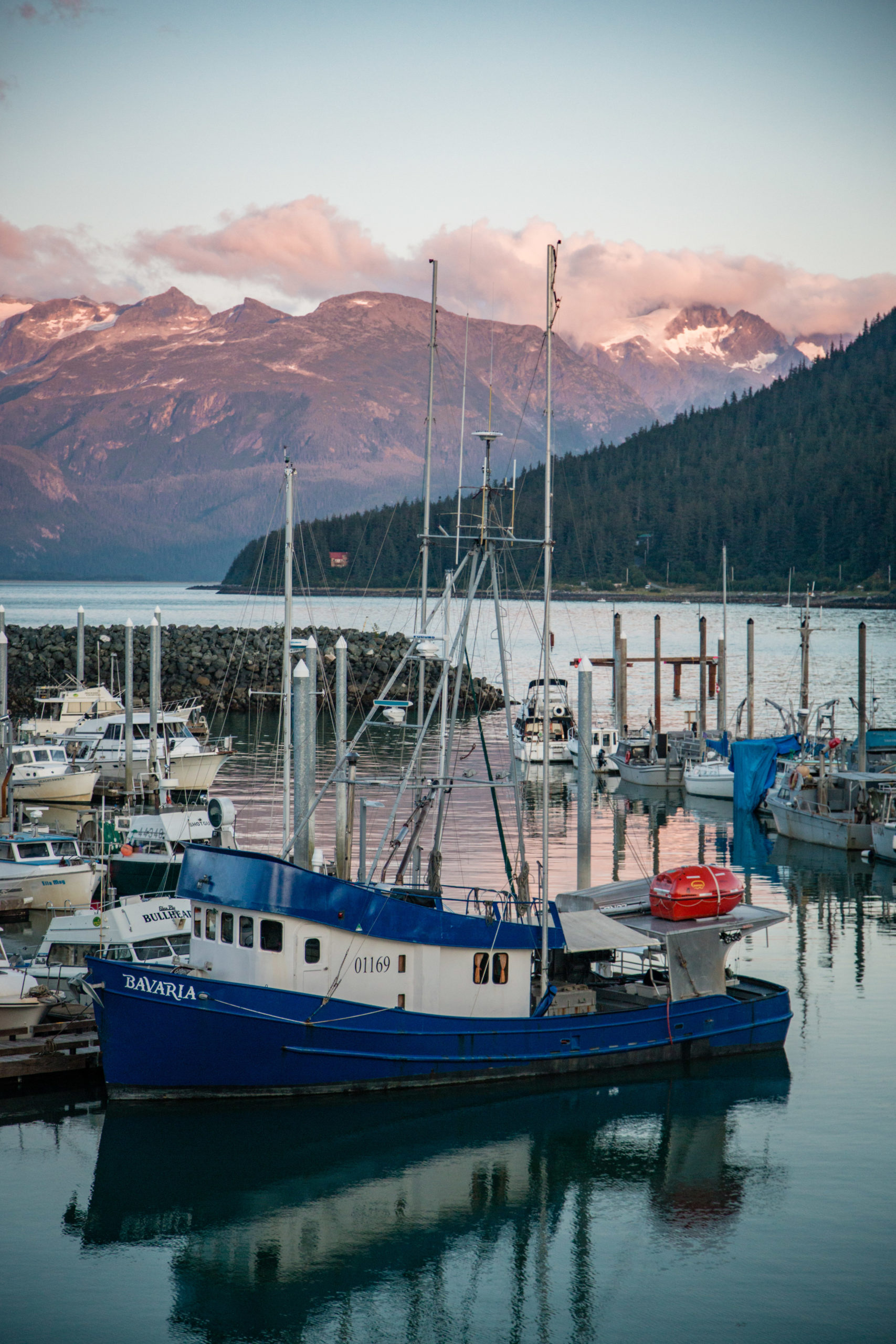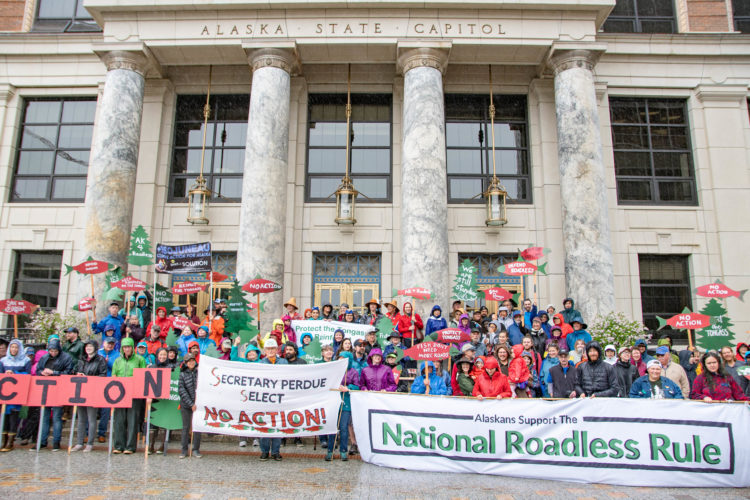We have much more to do and your continued support is needed now more than ever.
The Tongass National Forest May Lose Roadless Rule Protections Despite Overwhelming Public Pushback

The Tongass National Forest sprawls across 17 million acres and 1,000+ islands over the panhandle of southeast Alaska. Filled with glacier-carved fjords; thick green forests of hemlock, spruce, and cedar; and expansive desolate fields of rock and ice—words do not do justice to the Tongass National Forest’s beauty and it is no wonder how the Tongass has earned several nicknames…

Photo: Colin Arisman, Wild Confluence Media.
The United States Forest Service likes to call the Tongass the “Crown Jewel.” Both sport and commercial salmon fishermen have been known to refer to the Tongass as the “Salmon Forest.” This might be because The Tongass National Forest produces on average 25 percent of the west coast commercial salmon harvest. Some call it “America’s Amazon” as the Tongass boasts rich biodiversity including wildlife such as brown bears, Sitka black-tailed deer, bald eagles, northern goshawks, and much more.
Climate advocates point to the Tongass as “America’s Climate Forest” because the lush temperate rainforest is a carbon sequestration powerhouse, storing at least 8 percent of the total carbon absorbed by all the national forests in the lower 48 states. Most importantly, since time immemorial, the Tlingit, Haida, and Tsimshian people have called the Tongass “home.”
One reason why the Tongass National Forest is so impressive and remains intact is because 9.3 million acres of the Tongass National Forest are protected under the 2001 National Roadless Rule. The Roadless Rule protects roughly 58 million acres of the nation’s National Forest Service lands from logging and logging roads.
At the time it was passed, the rule was a deliberate conservation effort aimed at protecting high-value wildlife habitat, remaining old-growth stands and water quality, and to provide for outdoor recreation opportunities. Those outdoor recreation opportunities have had remarkable success and now contribute to the $7.3 billion outdoor recreation economy annually across the entire state. In Southeast Alaska specifically, the visitor industry employs over 8,000 workers, which is 18 percent of the annual jobs in the region.
Perpetually failing to align with their own constituents on the issue, Alaska politicians have never embraced the rule. The latest example of this came in January 2018, when the State of Alaska filed a petition with the U.S. Department of Agriculture (USDA) that would fully exempt the Tongass and its entire 9.3 million acres of roadless areas from the national rule.
The exemption is designed to prop up an archaic and struggling timber industry, which ran its course from 1950s to the late 1990s with the help of taxpayer subsidies. The proposed rule is nothing more than a final handout from the State of Alaska to the timber industry of the Tongass’ most productive old-growth forests. The truth is Southeast Alaska’s political leaders are out of touch with the fact that the economy has shifted. Tourism and fishing provide 26 percent of jobs in the region, while the timber industry provides less than 1 percent.

Photo: Colin Arisman, Wild Confluence Media.
The National Environmental Policy Act (NEPA) process for the proposed rule has exposed the stark divide between the priorities of Alaska’s political leaders and the will of the people. Over 90 percent of the 140,000 public comments from the scoping period called for keeping the 2001 National Roadless Rule protections on the Tongass. Alaskans and the rest of the American public know that allowing roadbuilding and old-growth clearcut logging will degrade wildlife habitat, pollute watersheds, threaten a key climate safeguard, and have long-lasting devastating impacts on Southeast Alaska’s strong fishing and growing tourism industries. After the scoping period ended, Alaskans continued to rally in anticipation of the Draft Environmental Impact Statement (DEIS) public comment period.
When the DEIS was released, Secretary of Agriculture Sonny Perdue chose to fully exempt all 9.3 million acres of the Tongass from Roadless Rule protections. The public, both in Alaska and the rest of the country strongly disagreed, inundating the Forest Service with over a quarter of a million comments. Nearly 1,000 Alaskans turned out to 19 public meetings held during the DEIS comment period. In the end, the U.S. Forest Service reported that 96 percent of the analyzed comments were in favor of the no-action alternative (alternative 1). This would instruct the Forest Service to keep the National Roadless Rule protections on the Tongass National Forest. A mere 1 percent voiced a preference for the full exemption.

The release of the Final Environmental Impact Statement (FEIS) for the Alaska Roadless Rule is due in June. However, controversy continues. The USDA Office of Inspector General is presently investigating the potential misuse of federal fire-fighting money by the State of Alaska to pay a Timber Industry Group to work on the Alaska Roadless Rule. Additionally, several Southeast Alaskan Tribal Governments recently wrote a letter requesting USDA Secretary Perdue to stop working on the Alaska Roadless Rule until after the COVID-19 pandemic, when they could engage safely in person for government-to-government consultation.
Once the FEIS is released, Secretary Perdue will have 30 days to issue his final decision, which will become effective immediately. Will Secretary Perdue stand with outdated political and struggling economic interests, or will he stand with the people and choose a decision that supports the current economic reality of Southeast Alaska?

We urge all Americans to continue to speak out in favor of keeping Roadless Rule protections for the Tongass. You can write Secretary Perdue at agsec@USDA.gov. We’d also love to hear your personal connection to the Tongass. Please share your story with the Southeast Alaska Conservation Council.





















